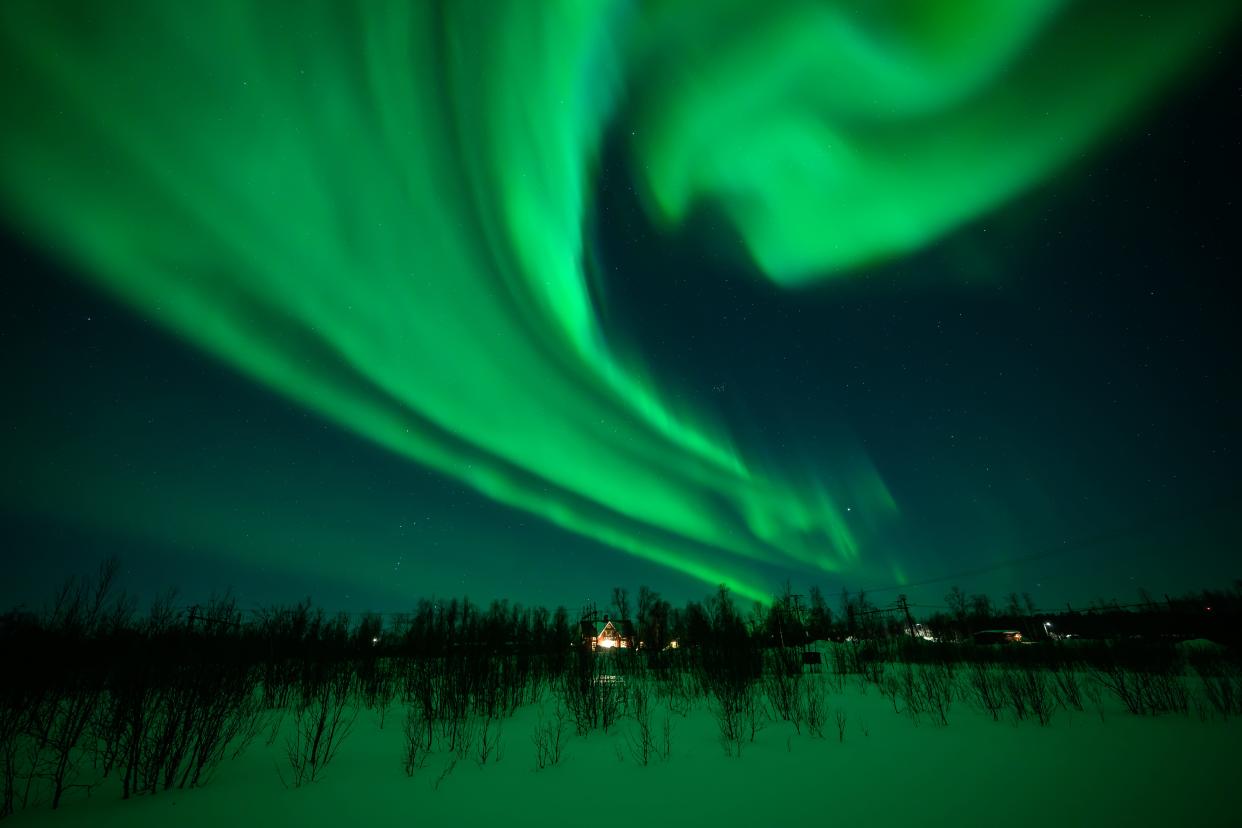Severe solar activity could make northern lights visible in Rochester. What to know
While weather conditions have been rife with instability here on Earth, sparking tornadoes, hail and other damaging storms, things haven’t been much different in space.
Those space weather conditions could create unique opportunities for viewing the northern lights, with the aurora visible over much of the northern half of the United States and as far south as Alabama or northern California, according to the NOAA Space Weather Prediction Center. The aurora borealis could be visible Friday, Saturday and Sunday nights.
What are coronal mass ejections?
On Thursday, the NOAA Space Weather Prediction Center issued its first severe geomagnetic storm watch since 2005 after at least five Earth-directed coronal mass ejections were observed from the sun. Coronal mass ejections are large eruptions of plasma and magnetic field from the sun’s outer atmosphere, known as the corona.
“Watches at this level are very rare,” NOAA said.
Those ejections occurred from a sunspot cluster that is 16 times the diameter of Earth, according to the NOAA Space Weather Prediction Center.
The first impacts of this heightened solar activity are expected midday May 10 and to persist through May 12.

On topic: What is space weather?
What are the impacts of space weather?
The last severe geomagnetic storm was on March 23, while the last extreme storms occurred in October 2003, according to NOAA. Those extreme storms caused power outages in Sweden and damaged power transformers in South Africa.
Space weather events can have a wide-reaching impact on the planet, affecting a larger geographic area than normal weather systems. While the sun may be 93 million miles away, space weather can disrupt technology like satellites or air traffic control systems.
The activity that originates closer to the sun that qualifies as space weather includes phenomena like solar flares and coronal mass ejections.
More: La Niña is coming this summer. What impact will it have on Rochester weather?
What happens in a severe geomagnetic storm?
A coronal mass ejection shot a burst of plasma toward the earth at 2 million miles per hour on April 21, 2023, causing a severe geomagnetic storm, according to NOAA. The ejection was rated at a 4 out of 5 on NOAA’s space weather G-Scale for tracking geomagnetic storms, capable of producing voltage control problems in power systems and surface charging and tracking problems on spacecraft.
The April 2023 coronal mass ejection also created a particularly spectacular aurora, allowing for viewing as far south as Arizona and Arkansas, according to NASA. The light of an aurora is caused by interactions between the expulsions from the sun and earth’s upper atmosphere. Coronal mass ejections on Dec. 14 and 15 were the likely cause of impressive auroras over Canada.
Weather conditions in Rochester are not as favorable for viewing the night sky on Friday, with cloud cover and some rain showers expected overnight in the AccuWeather forecast. The clouds and rain are expected to persist through the weekend, limiting opportunities to witness the Northern Lights. But the forecast always can change.
— Steve Howe covers weather, climate and lake issues for the Democrat and Chronicle and is an RIT graduate. Share with him at showe@gannett.com.
This article originally appeared on Rochester Democrat and Chronicle: Northern lights could be visible in Rochester NY this weekend.
